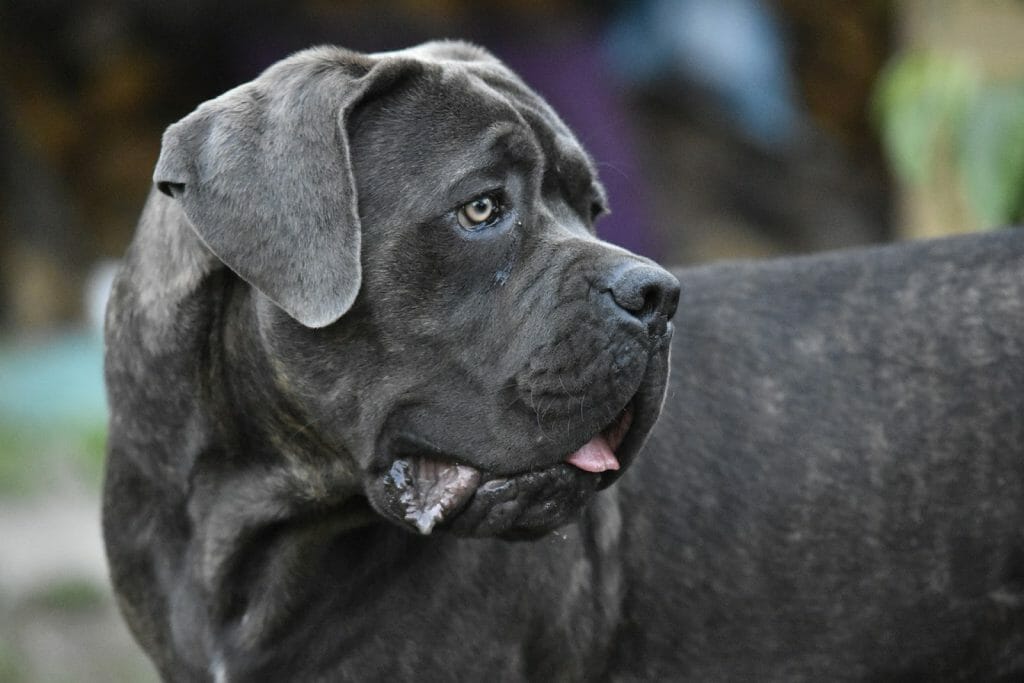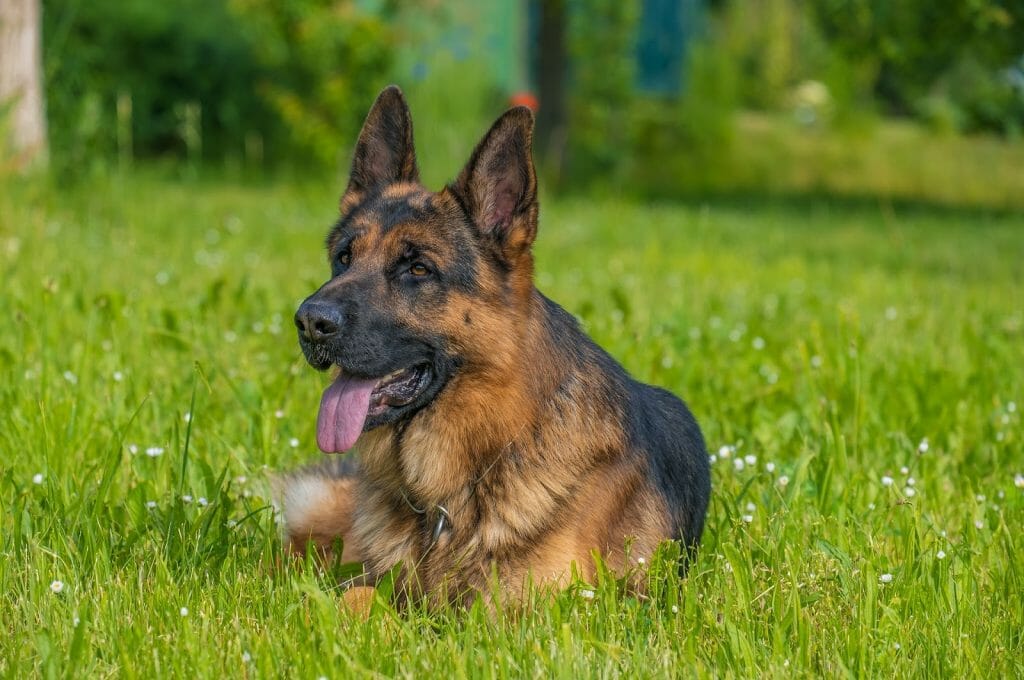Cane Corso or German Shepherd: Which Guard Dog Excels More?
It’s fair to say that both the Cane Corso and the German Shepherd (GSD) excel well in keeping families and homes safe for several decades. They’re bred to be near the posts, guarding and observing their surroundings with their intimidating stare and demeanor.
If you’re pondering the virtues of these two breeds before deciding on which dog to take home with you, then you’re in for a lot of interesting facts and surprises.
To give you a thorough glimpse of what these two breeds can offer, this article has it all for you. The rest can be charged to your experience with them.
Table of Contents
Breed Origins
Cane Corso
Native to Italy, the Cane Corso was more than just a mere guard dog. With his incredible build and power, the dog was also trained to fight in wars as did his ancestors as well as join large games that would involve hunting dangerous animals like lions.
Later, the dog’s role shifted and he became a dependable farmhand as well as a patrol dog. Like several other breeds, the Corso went almost extinct as an impact of the two world wars, but a resurgence occurred in the 1970s thanks to the primary effort of Dr. Paolo Breber and several others.
German Shepherd
The herding dog of Germany came about in 1899 and he’s attributed to none other than Captain Max von Stephanitz. The desire to create the breed revolves around making one that’s versatile enough to lead the cattle as well as patrol them.
Although the original purpose of this dog was to shepherd the livestock, the role gradually expanded making him a trusted military aid. He would deliver food and other supplies to the soldiers and these days, he’s a common sight alongside policemen.
There have been a lot of name changes for the GSD. He was at first initially called the Sheepdog then it turned into a Shepherd dog, Alsatian Wolf Dog, and finally went back to naming it the German Shepherd.
Size, Appearance, & Coloring
Cane Corso


A gray brindle Cane Corso with natural ears.
The Cane Corso exhibits a massive size and build. He’s closely related to the Neapolitan Mastiff except that he doesn’t have extremely loose skin. He’s less bulky yet well-defined and muscular.
According to the American standards, an adult Cane Corso’s height only ranges between 23.5-27.5 inches and the weight has to be proportionate to these measures.
The head has a clear-cut stop and the muzzle may have a bit of jowl on the sides. Both eyes are oval-shaped, set apart, and dark in the iris. Naturally, the coat has to be stiff and short and it only comes in a few colors like gray, fawn, black, red, and brindle.
German Shepherd


A German Shepherd in a black and tan coat.
As expected, the breed manifests a versatile and hardy set of characteristics. He’s common since he’s popular in the US. His distinct, majestic stance shows agility, balanced proportions, as well as unmatched poise.
While the front legs stand straight, those in the hind are well-angulated. The body is streamlined but it slopes from the neck down to his low-carried bushy tail with a slight curvature. Typically a medium-large dog, the GSD weighs 50-90 pounds and stands tall at about 22-26 inches.
There are loads of colors natural to the GSD but the common ones are cream, red, silver, and tan with a combination of black.
Temperament
Cane Corso
The menacing aura of the Cane Corso shouldn’t make you think it’s impossible to create a relationship with him. This canine knows how to socialize if he’s been around several other dogs and people during puppyhood.
He can be taught how to put his guard down. The atmosphere has to be calm if he’s around inoffensive strangers, indifferent and unaffected by gunfire or any other loud noises, and aggressive in defending his owner in cases of attacks.
He’s a wonderful pet that knows how to be affectionate, yet it’s preferred that he’s not left with kids to avoid accidents considering the size.
German Shepherd
Set out for a mission, the GSD is confident in whatever field he’s placed in. His high intelligence enables him to quickly absorb dog lessons making him one competent dog among other breeds.
He’s quick to warn you about the presence of strangers as he’s extremely protective. However, a well-trained GSD shouldn’t attack a person without any reason. Early socialization and training help in honing him into becoming a devoted companion.
If you have cats at home, make sure they’re introduced properly and boundaries are set right away.
Exercise Needs
Cane Corso
The Italian Mastiff can keep up with certain outdoor activities like hiking, jogging, and training sessions in the yard. You can settle with a 60-minute per day exercise or depend on what the vet recommends.
With the dog’s past lifestyle, he’s not meant to be a couch potato. Push him to move around to keep the weight down. Large dogs like him can go even larger and that can be medically detrimental.
German Shepherd
It’s no wonder why the German Shepherd loves to learn and do tasks. His history sure does have a large impact on how he is today so you have to commit that you provide him with an active lifestyle to keep him from being bored.
If he’s not a working dog, at least grant him 60 minutes of exercise per day. Divide this into smaller sessions to avoid over-exhaustion. The needed stimulation, both physical and mental, has to happen regularly.
Grooming Requirements
Cane Corso
Luckily, the Cane Corso is one of the dogs that are easy to maintain. He’s not a heavy shedder except during the spring and fall seasons. Other than that, he’s good with a weekly brush and a 6-8 weeks bath.
Be gentle when working around his coat and skin. To be safe, only use canine products that are mild to avoid skin allergies and other undesirable conditions.
German Shepherd
With his medium-length coat, daily brushing is required. Spare him from daily baths, however, and just wash him whenever it’s necessary or schedule it every 2-3 months. Since the GSD is a heavy shedder, people with allergies shouldn’t get this breed as a pet.
As with other routine grooming, nail trimming can be done every month to avoid overgrowth. Do check his teeth and ears too for any signs of infections.
Health Problems
Cane Corso
No dog is 100% free from health issues. While the Cane Corso breed is generally healthy, he may still, at one point, experience or develop mild to serious health cases that would require immediate help from a professional. Watch out for the following:
- Entropion
- Ectropion
- Arthritis
- Osteochondritis
German Shepherd
Most German Shepherds are healthy, more so if they came from a reputable breeder. Still, some of them can experience a variety of medical conditions which can be treated. Some of which are:
- Degenerative myelopathy
- Hip dysplasia
- Bloat
- Diabetes
Breed Popularity
The following breeds have a firm grasp on their respective ranks which were defined by the American Kennel Club’s breed popularity ranking:
Cane Corso: 32nd
German Shepherd: 2nd
